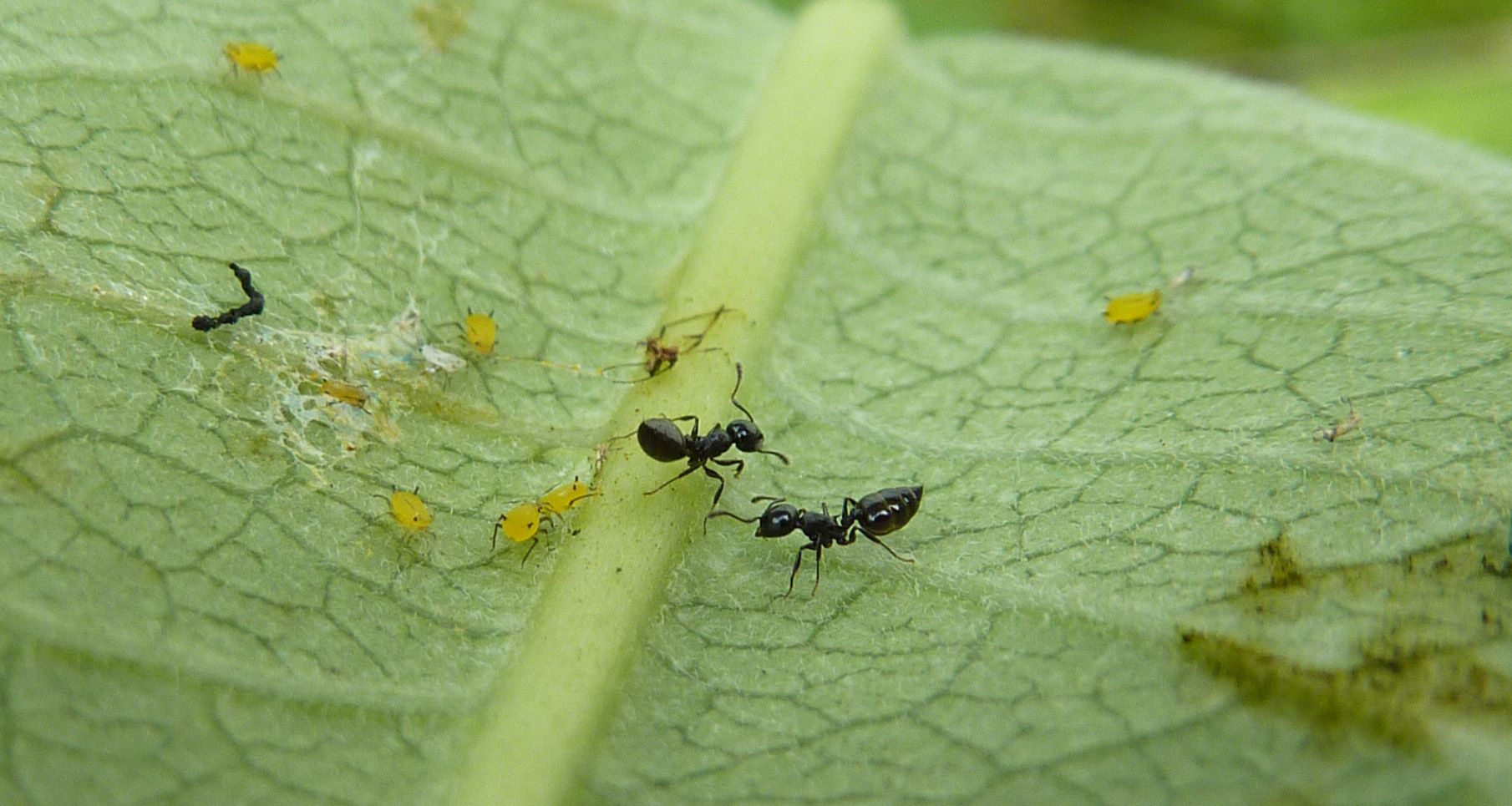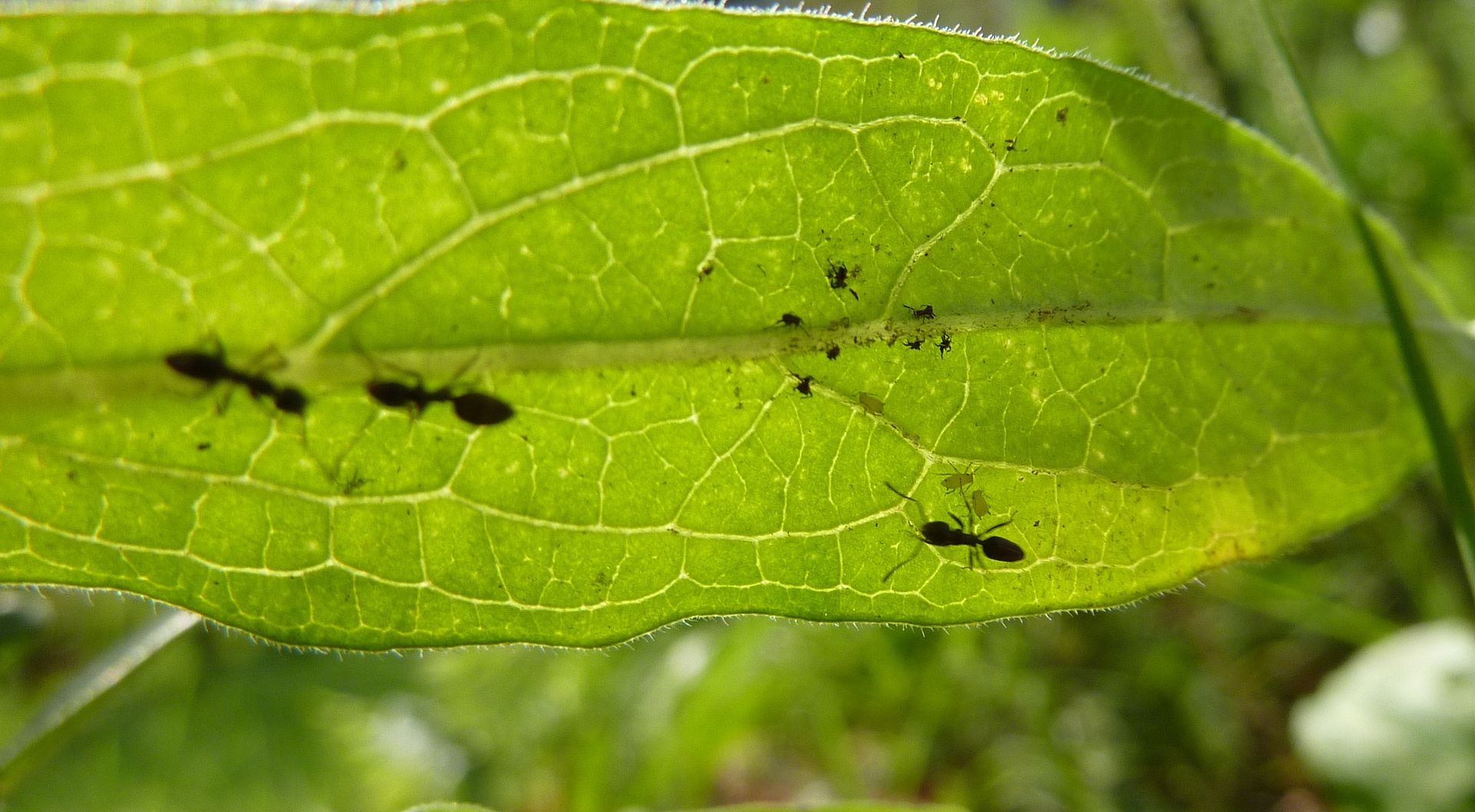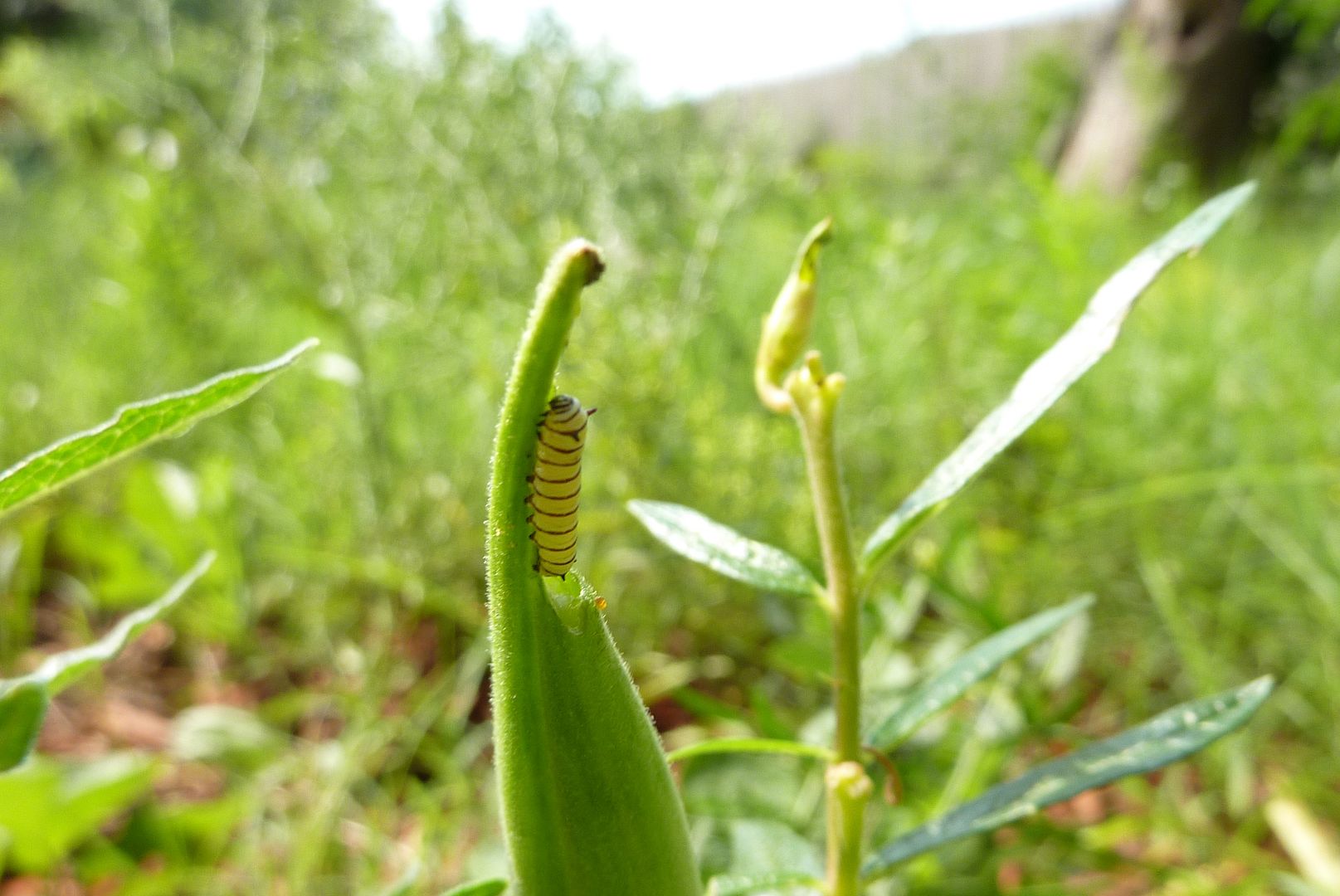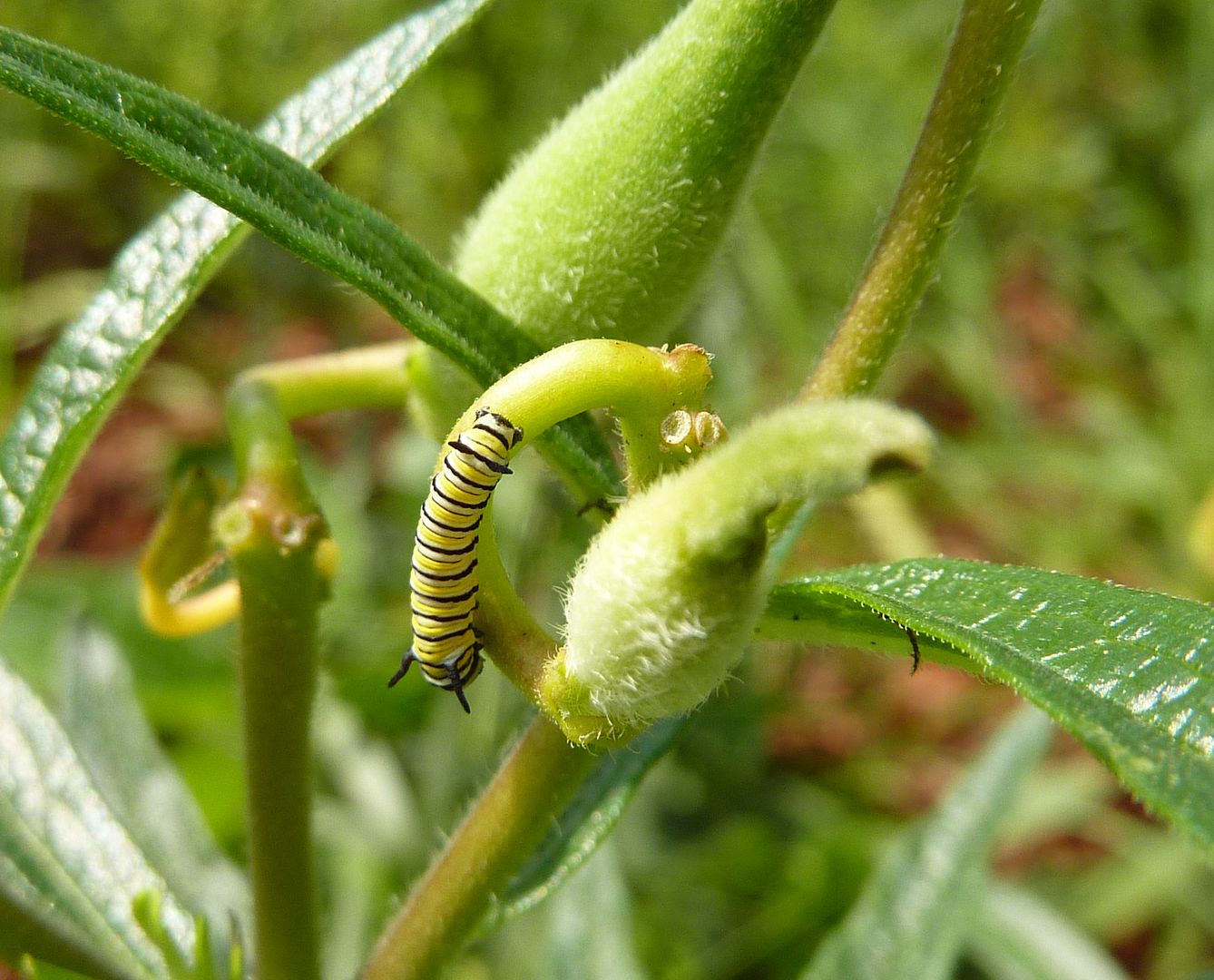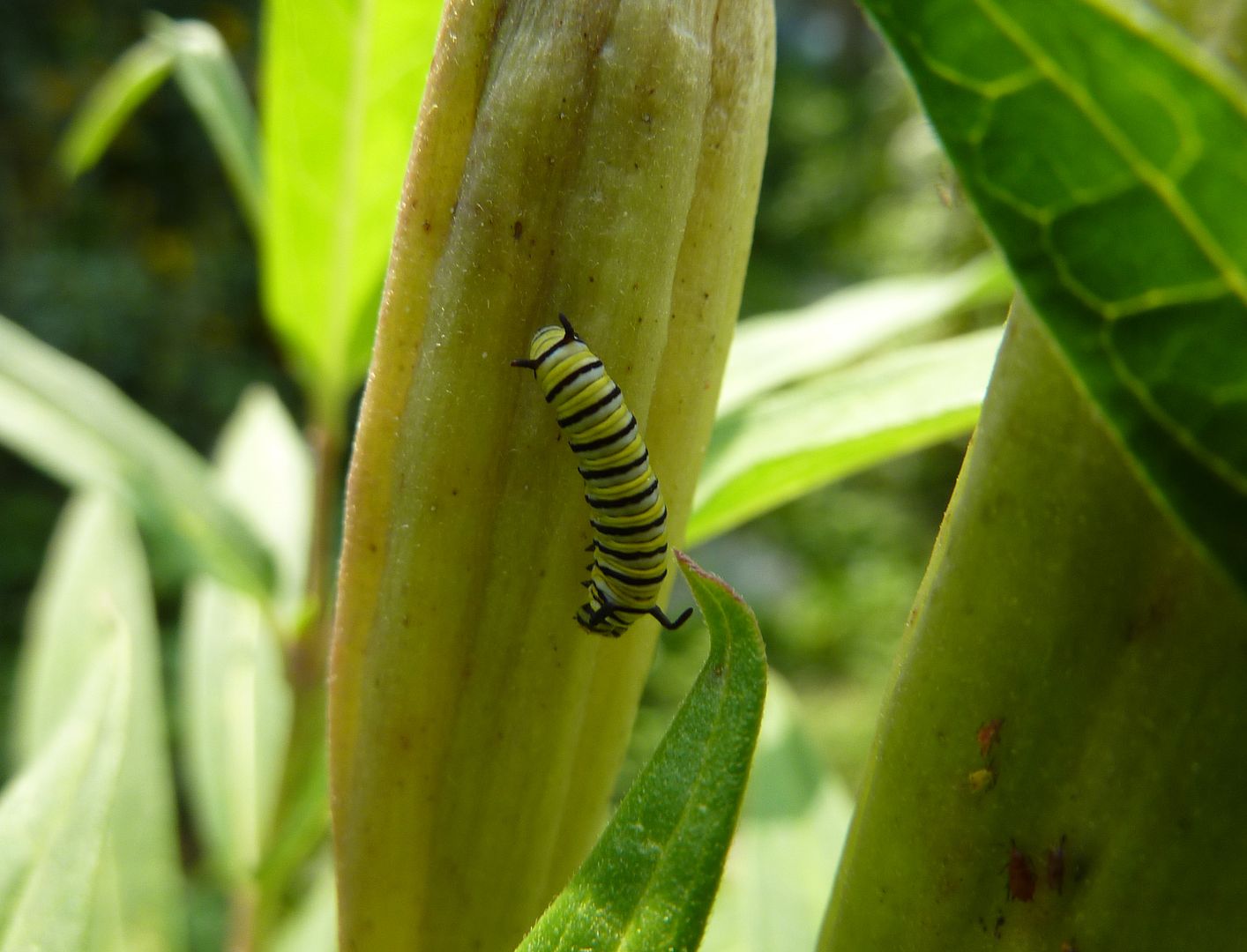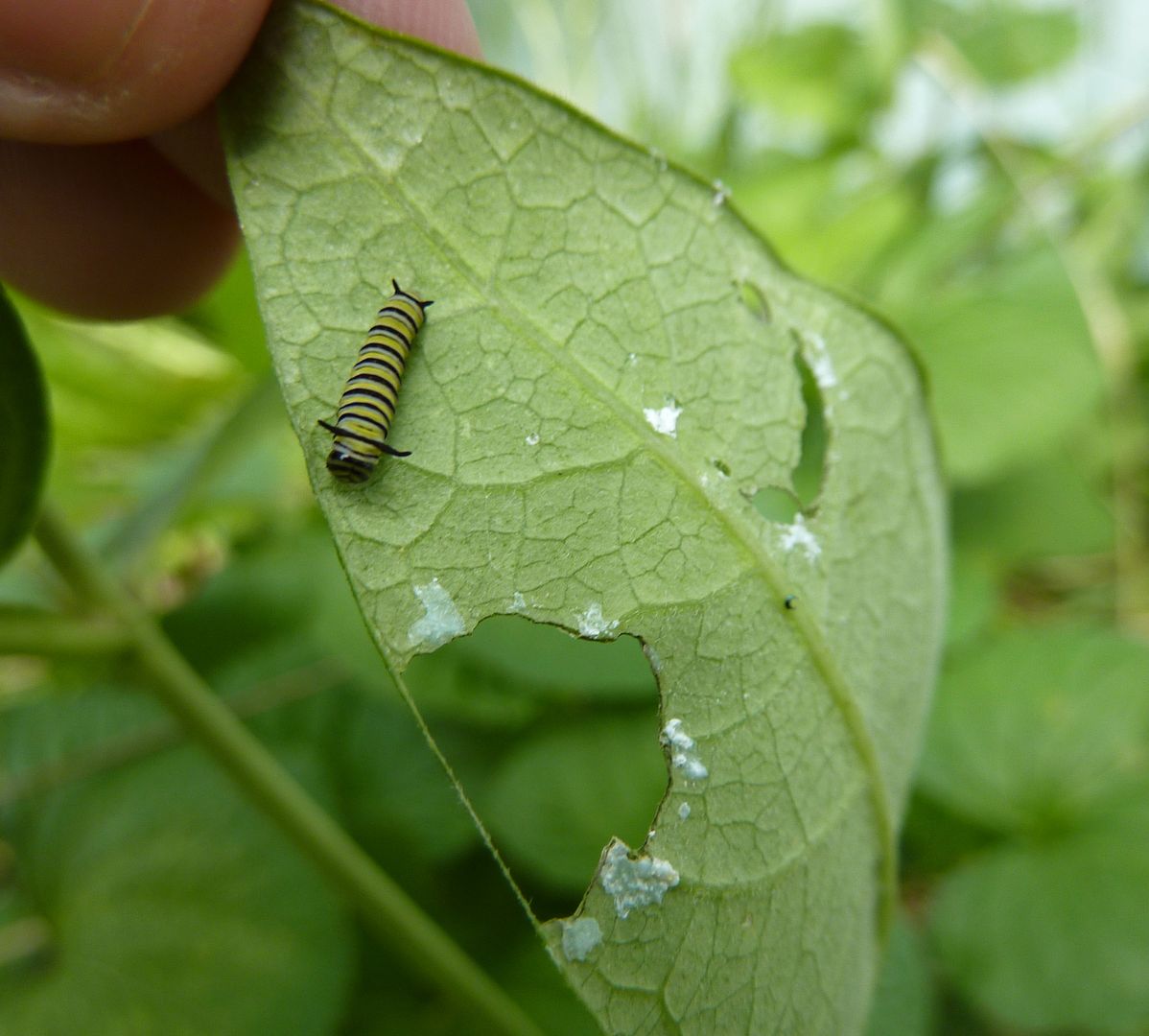Outskirt populations of these aphids are being guarded by ants. This is actually kind of odd as milkweeds are supposed to be covered in hairs that release their milky sap when disturbed. Most ants can't walk over the plants without becoming stuck, though I've never seen this in action. The sap's reaction to the air is turning into a tar-like substance.
Tapinoma sessile, The Odorous House Ant, has no trouble getting past the sap defense and I regularly see them stealing nectar from milkweed flowers. Crematogaster cerasi and Camponotus chromaiodes are two new species this year I'm seeing on milkweeds. Perhaps different milkweed species have better defenses against different species of ants?
All of this is an arms race for the monarch butterfly. Early instars have the classic warning colors, but I don't believe they're poisonous yet. Spiders and wasps make short work of them. As mentioned before milkweed sap turns to tar when exposed to air. Roughly one third of all monarch caterpillars don't survive their first day due to their mouths being fused shut. On the flip side, caterpillars need to eat the plant to gain it's toxicity. That can't happen if the aphids have drained the plants dry. Pictured above is a caterpillar who's taking advantage of the system.
Eventually they grow large enough that the sap isn't an issue, but they'll still cut the main vane that's filling the leaf with sap. (I should mention this caterpillar is eating Purple Milkweed, Asclepias purpurascens, which has thicker leaves. Caterpillars otherwise eat the rim of the leaf too rather than just making a hole.)
As they get older, they become more mobile. Right down to the point where they abandon the plant to turn into a chrysalis somewhere. This way they remove themselves from the tug of war happening on the plants. I know people who've had patches of milkweed and believe that none of the monarch caterpillars they've had on their plants have ever reached adulthood because of this behavior. True enough they are a little illusive.
When they're in their last instar, they're typically nibbling the tops off the milkweed, cutting off the flow of sap to multiple leaves all at once. This is the perfect time to move them to a screened cage (in a secure, sheltered spot outside if you have air conditioning doors). From here simply feed them milkweed cuttings that are free of monarch caterpillars, or eggs, or other things unwanted. They should form a chrysalis within a week, and from there hatch as an adult in the next 10 to 14 days. Usually hatching in the morning before 12noon.
As for the milkweed plants go, I believe young ones are at risk of being eaten to heavily to come back next year. Older ones should rebound better to such attacks. Generally when planting milkweed in the garden it's a good idea to include some sort of autumn companion plant to steal the show away from the milkweed, which can often be left bare of any leaves.

